What Is Cassava Flour?
What is cassava flour? And how can you use it in baking? I break down everything you need to know about cassava flour, and share my favourite gluten-free blueberry muffin recipe.
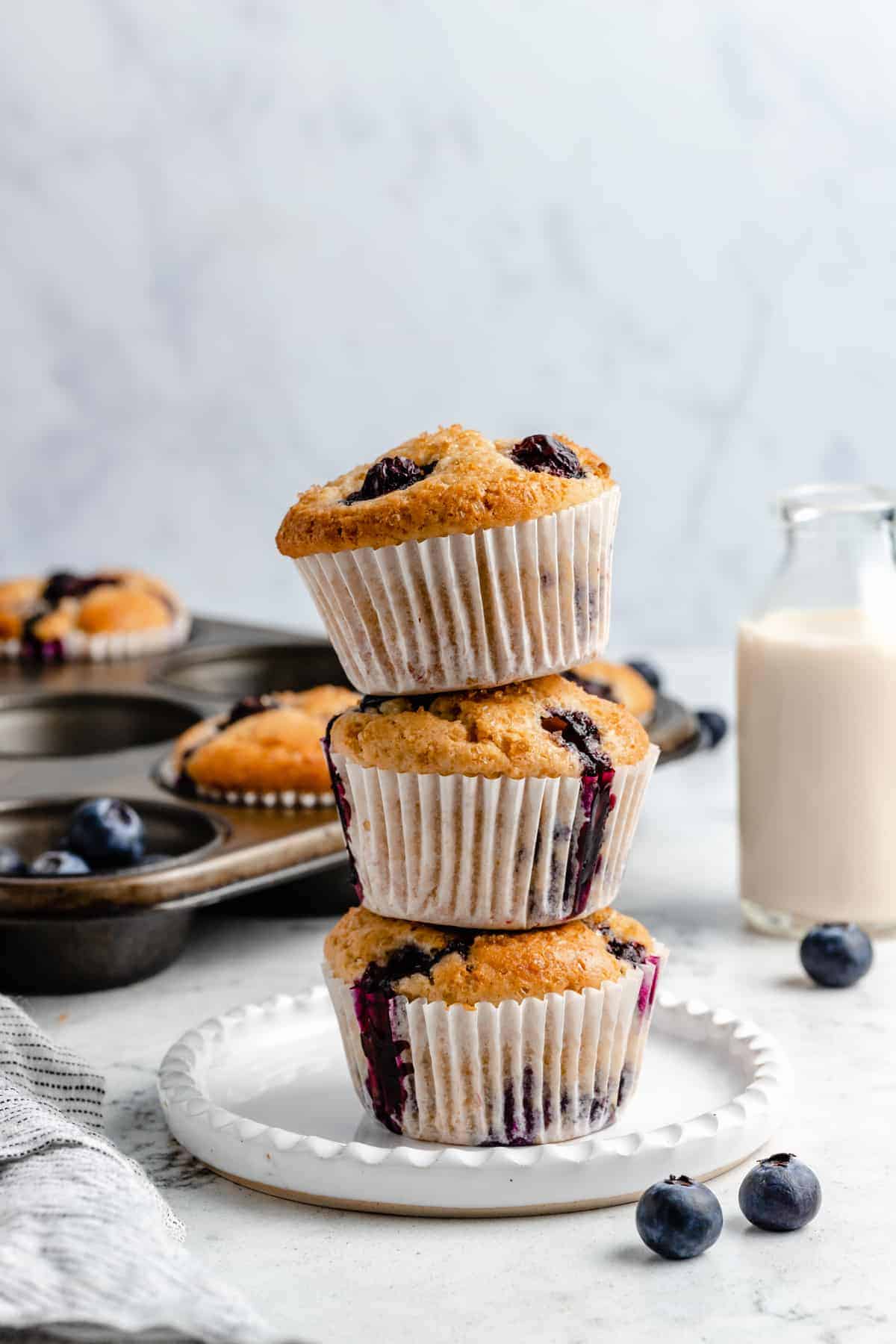
There are so many options when it comes to gluten-free flour, from almond to coconut and measure-for-measure all-purpose blends. One lesser-known flour worth stocking in your pantry is cassava flour.
I grew up with cassava here in Jamaica, so when the cassava flour trend started, I was probably more shocked than other people at its capabilities as a flour. I’ve only known cassava to be used one way: boiled.
Friends, cassava flour is MAGICAL. It’s fine in texture, paleo and Whole30-friendly, gluten-free, and best of all for me: it has a neutral flavour similar to wheat flour.
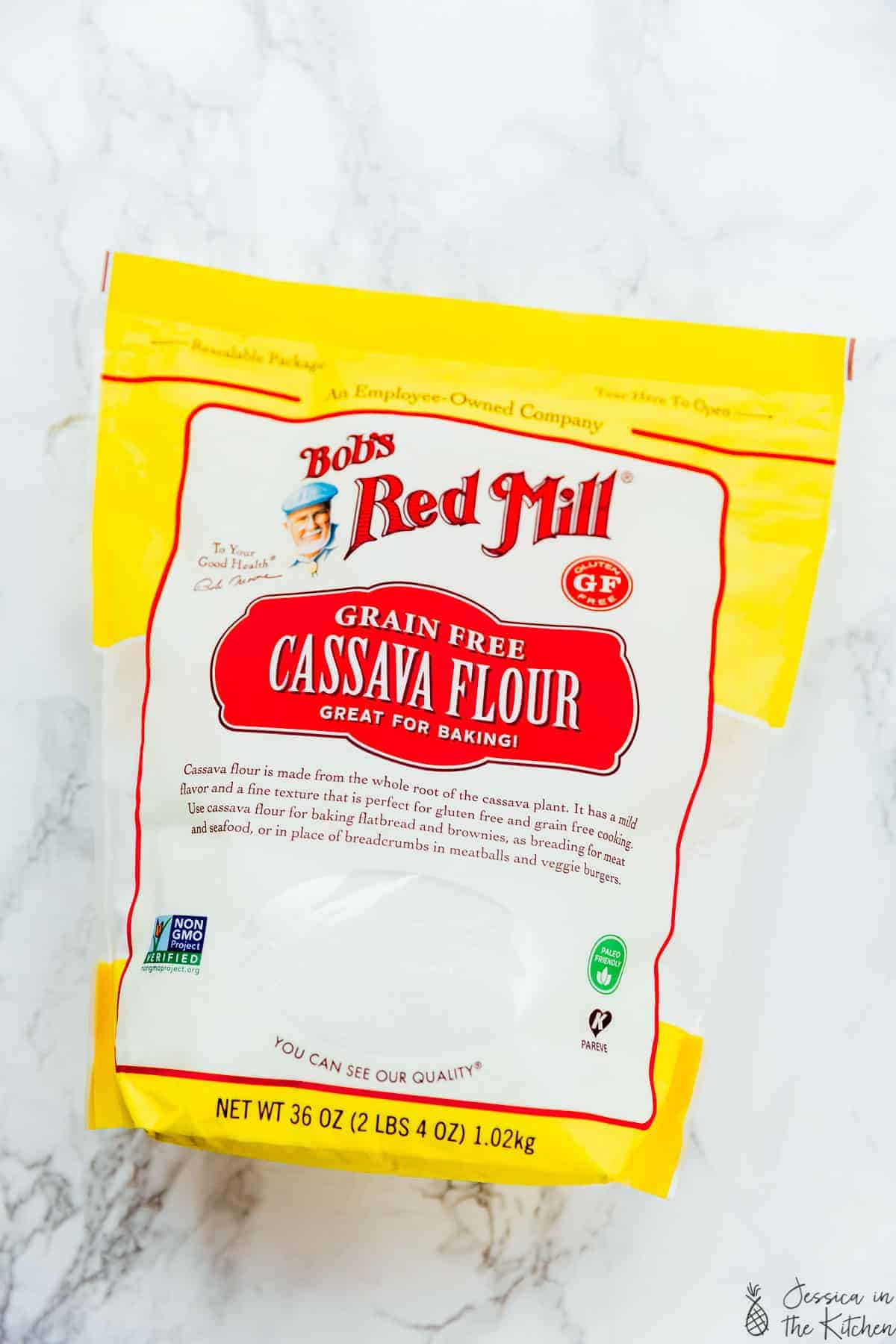
What Is Cassava Flour Made From?
Cassava flour is made from the root of the cassava plant, which is native to South America. This type of flour has become a popular choice among those living gluten-free lifestyles because it can be used as an alternative to wheat-based flours—in fact, some say it is the closest to wheat flour out of all gluten-free flour options.
Cassava flour is made by peeling the cassava tuber, soaking it in water, then letting it dry in the sun or an oven. The outer layer is scraped away, leaving the rest to be ground into a fine flour.
You might be surprised to learn that the cassava plant is also the source of tapioca, which is a starchy ingredient used in many delicious treats like bubble tea and puddings.
So Is Cassava Flour the Same as Tapioca Flour?
No, cassava flour is not the same as tapioca flour. Unlike tapioca, which is made from the starch of the cassava plant root, cassava flour is made from the entire root. Because of this, tapioca flour has less fiber and overall nutrition than cassava flour. This higher fiber content is why it works particularly well for baking.
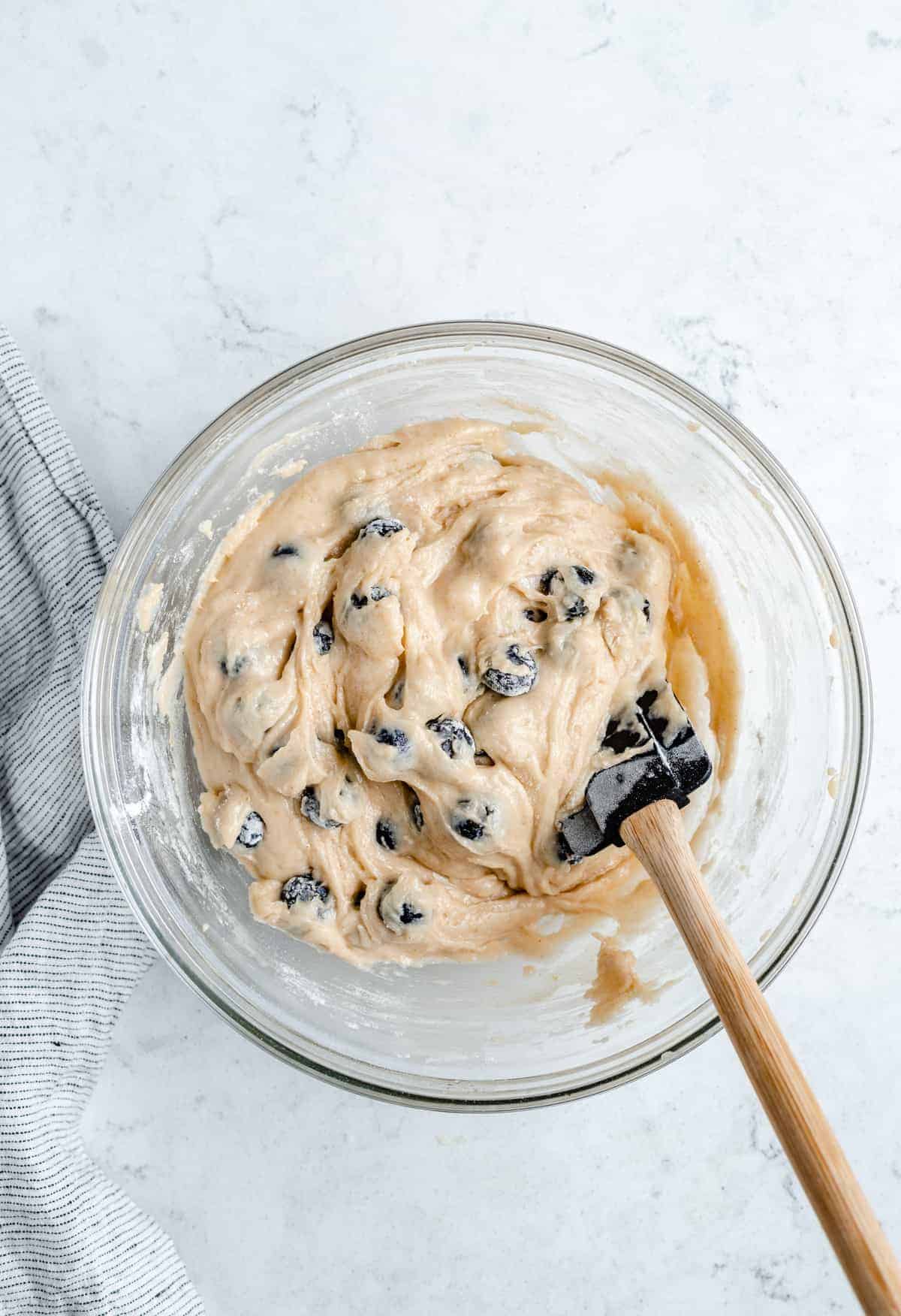
Health Benefits
Besides being a great gluten-free flour option, cassava flour is packed with health benefits. It’s:
- High in fiber
- Rich in vitamin C
- Low in calories, sodium, and sugar
- Grain- and nut-free
- A good source of potassium, calcium, vitamin A, iron, magnesium, and folate
How to Use It
Cassava flour has a mild taste and light texture, so it can be used in place of wheat flour in many recipes—it’s one of the rare gluten-free flours that can be used as a wheat flour substitute on its own, without mixing in any additional ingredients.
Cassava flour is perfect for pancakes, waffles, cakes, cookies and other baked goods—keep reading for my gluten-free blueberry muffin recipe! It can also be used to thicken soups or sauces instead of traditional white flour.
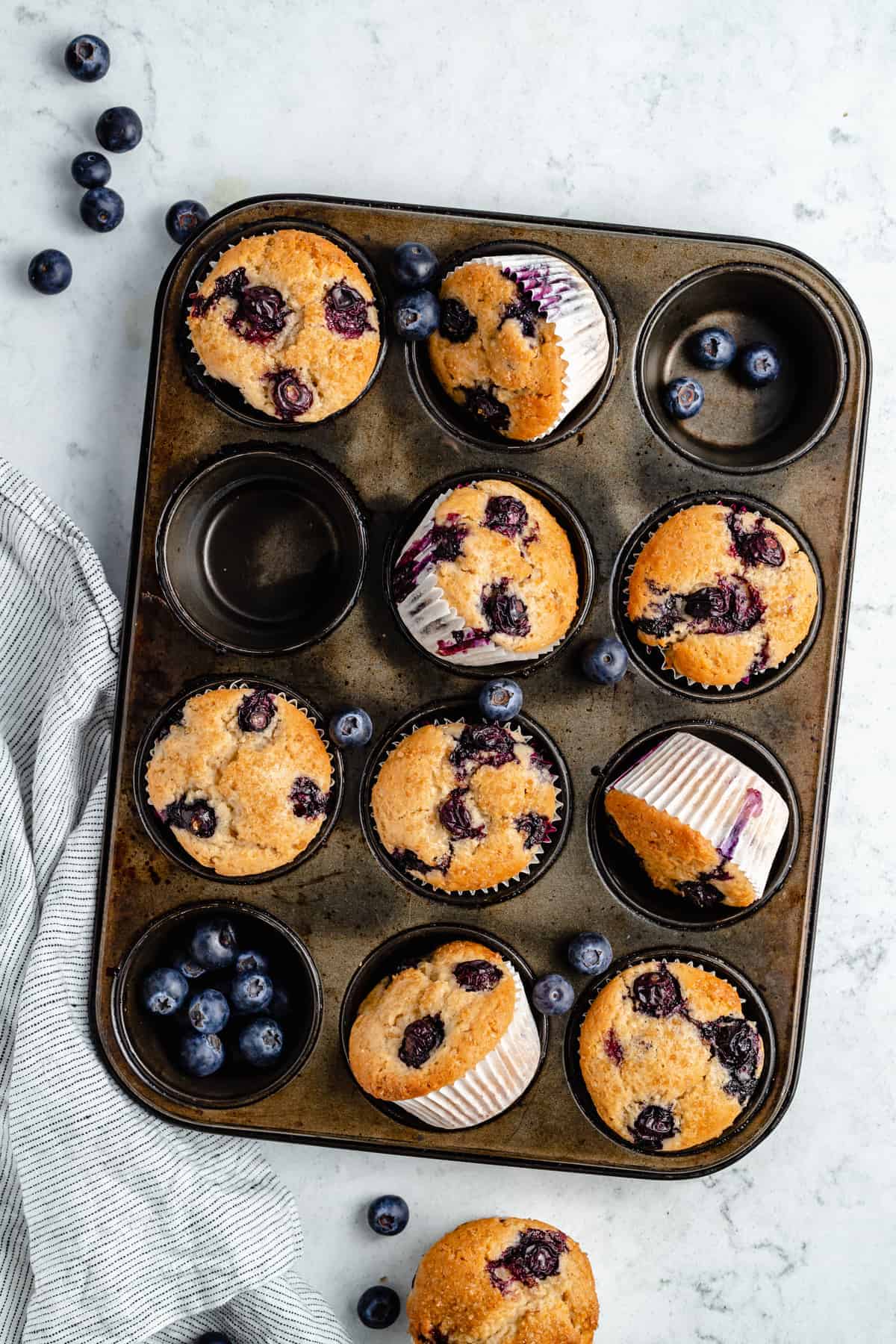
My Top Tips for Using Cassava Flour
Now that you know what cassava flour is, here are some more pointers to help you get started with this stellar gluten-free flour option:
- Go with a trusted brand. I recommend Bob’s Red Mill. There are a lot of random brands that pop up on Amazon and they’re not always transparent about where they come from and how their products are made.
- Adjust your baking method. This flour is very fine, which means it locks up a lot in a mixer. I prefer to fold in it, then turn on the mixer, so there isn’t flour flying everywhere.
- Start by using it in already gluten-free recipes. To familiarize yourself with it, I recommend starting by using it in recipes developed specifically for cassava flour. Then, move onto swapping it in as a 1:1 substitute in recipes that use other gluten-free flours. Once you get used to working with it, you can use it as a substitute in recipes that use traditional flour. Cassava flour absorbs a lot of liquid, so just keep that in mind. I would start with a recipe you know and love, so you know what the batter should look like.
- The results are different than wheat flour. Cassava does lend itself to a chewier texture, perfect for breads, pizza doughs and of course—muffins!
Gluten-Free Blueberry Muffins
Ready to get started? Try this blueberry muffin recipe, a gluten-free version of my vegan blueberry muffins!
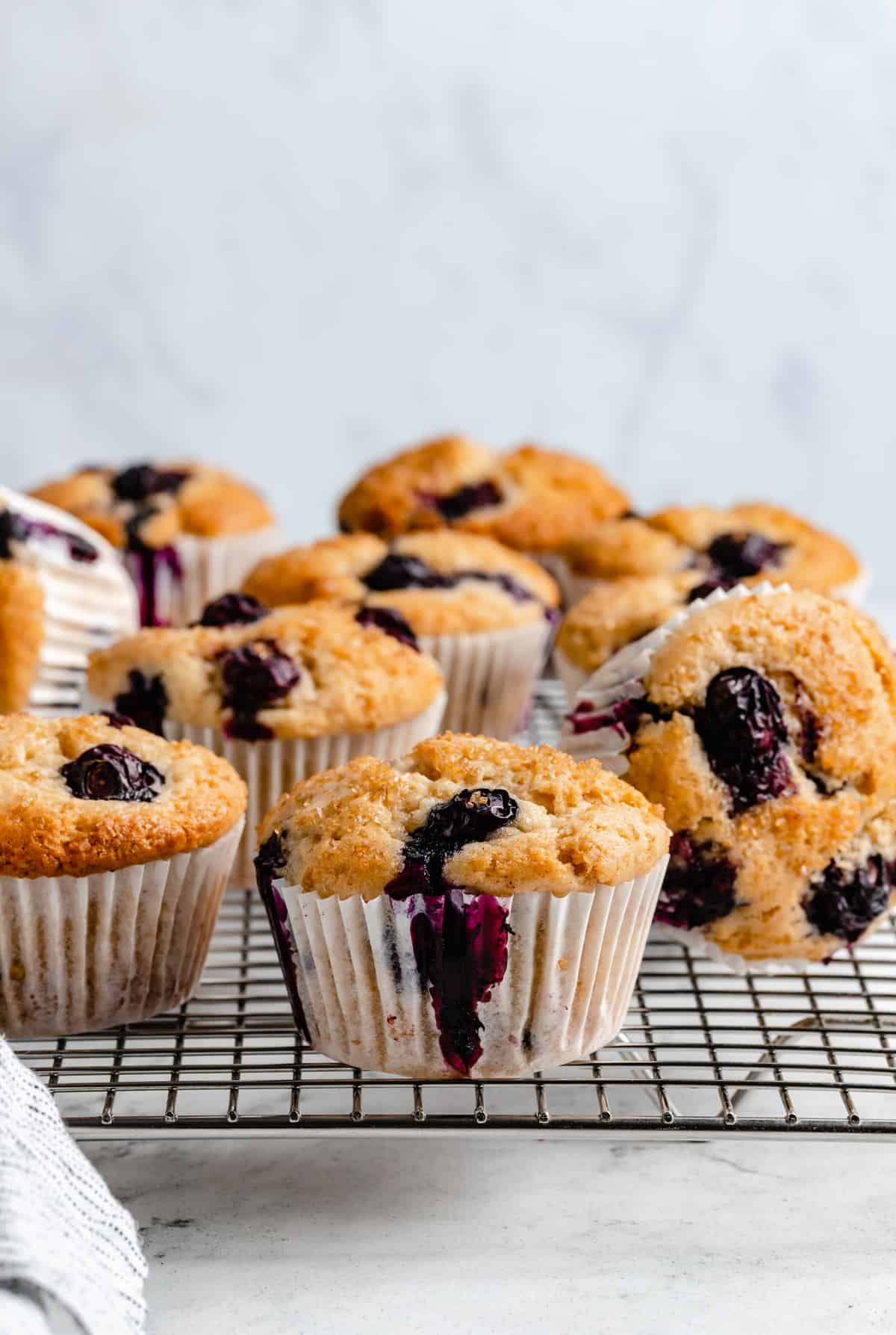
More Cooking and Baking Guides
- How To Cook Tofu 101 + Best Tips on Making the Most Delicious Tofu
- How to Make Vegan Parmesan Cheese
- Is Yeast Vegan?
- How To Make A Flax Egg (2 Ingredients) Guide

Gluten-Free Blueberry Muffins
Ingredients
- ¼ cup coconut oil, 52.2g
- 1 cup cane sugar, or coconut sugar, 192g
- 1 cup soy milk, or other nut milk, 240ml
- 2 teaspoons apple cider vinegar
- 2 cups Bob's Red Mill Cassava Flour, 280g
- 2 teaspoons baking powder
- ½ teaspoon baking soda
- 1 teaspoon sea salt
- 1 Bob’s Red Mill Egg Replacer equivalent
- 2 teaspoons vanilla extract
- 1/2 teaspoon lemon extract, optional
- 1 cup fresh or frozen blueberries*
Instructions
- Preheat oven to 425°F/220°C. Spray a muffin pan with non-stick flour spray or rub with vegan butter and dust with cassava flour, removing excess.
- Mix the soy milk and the apple cider vinegar together and set aside to create a vegan buttermilk.
- In a bowl of a mixer, mix the coconut oil, sugar, vanilla extract, lemon extract together for about 3 minutes. After that add the Bob’s Red Mill Egg Replacer and combine for another 30 seconds, scraping down the bowl.
- While that’s mixing, in another small bowl, mix the Bob’s Red Mill Cassava Flour, baking powder, baking soda and sea salt.
- Add the flour mixture to the bowl, alternating with the soy milk until finished, ending with the flour. I did it in sets of three.
- Toss the blueberries in some cassava flour, then fold into the batter lightly, so as to not streak too much blueberry all over it. Fold until combined.
- Using a 1/4 cup measuring cup, pour the batter into each of muffin hole; they should be filled about 3/4 way high. Alternatively, you can just fill 10 muffin holes for slightly larger muffins. Fill in the muffin tins with any extra batter, and smoother over. The blueberries are chunky so be sure to smooth it over to ensure the best looking muffins.
- Bake for 5 minutes, then reduce the temperature to 350 degrees and bake for another 18-20 minutes until a toothpick inserted into a muffin comes out clean. Remove from oven and allow to cool in pan for about 10 minutes. Remove (I just use the same toothpick or a knife) and place on a wire rack to cool completely.
Notes
Disclaimer: Although jessicainthekitchen.com attempts to provide accurate nutritional information, kindly note that these are only estimates. Nutritional information may be affected based on the product type, the brand that was purchased, and in other unforeseeable ways. Jessicainthekitchen.com will not be held liable for any loss or damage resulting for your reliance on nutritional information. If you need to follow a specific caloric regimen, please consult your doctor first.




Those look awesome and i would like to try working with that flour. But that is a lot of sugar for a muffin! sounds way to sweet to me especially w/ the sweetness of the blueberries. is that because of the flour? Would i be able to cut it down to 1/4 of a cup which is what i typically would use in a sweet fruit muffin?
thanks.
Hey Jacquie! We’re happy you like it! 1 cup of sugar split between 12 muffins comes up to a little more than a tablespoon per muffin, but if you want to you can definitely cut the sugar but I can definitely recommend a 1/4 cup instead if you would like! You should also taste your blueberries first ours were a little tart you might want a little sweetness to balance it out. I hope this helps.
Hi Jessica! These are delicious looking and I can’t wait to try the recipe (thank you for sharing, BTW).
I have a question for you. This is new to BRM from what I’ve read and I hope I can find it on our stores soon! I’ve used the other two leading brands of cassava and find I have to sift, sometimes two or more times to get the grit out. Do you find this has a gritty finish?
Thank you again!
Hi Georgia,
Thank you so much and I hope you really enjoy these!
Happy to say that these have like 0% grit! The flour is so fine that it’s almost as if it’s fluffy – you definitely won’t need sift this at all, nor does it have a gritty finish! Hope that helps so much!
Thank yo so much, that really is very helpful to know! I’m going to use up what I have and then I’ll definitely be ordering some through your link. We don’t seem to carry it anywhere locally yet. Thanks again!
Hi Jessica,
My name is Anuj Agarwal. I’m the Founder of Feedspot.
I would like to personally congratulate you as your blog Jessica In The Kitchen has been selected by our panelist as one of the Top 30 Black Food Bloggers on the web.
https://blog.feedspot.com/black_food_bloggers/
I personally give you a high-five and want to thank you for your contribution to this world. This is the most comprehensive list of Top 30 Black Food Bloggers on the internet and I’m honored to have you as part of this!
We’d be grateful if you can help us spread the word by briefly mentioning about the Top 30 Black Food Bloggers list in any of your upcoming post.
Please let me know.
Best,
Anuj
I just made this and my batter was super super thick….not sire what the heck happened ? I am baking them now but not sure how they will come out
Hi Jennifer. Thank you so much for reading! I want to ask you a few questions to help. Did you weigh the flour and the almond milk?
No I did not. I don’t weigh out anything when I bake sorry
No worries we might be able to get away with not weighing the almond milk but the cassava flour may need to be weighed.
These were delicious! I doubled the batch and they were gone in about three days!
That’s so amazing Misty! We’re glad that you enjoyed the recipe, that time period sounds about right for our house too lol! Thank you so much for reading!
Hi, these look yummy! Wondering if I can substitute the vegan egg with an actual egg, and what would be a good substitute for the coconut oil as I am looking for a lower saturated fat alternative.
Hi Heidi. Thanks so much for readin. A low fat substitute would be of use to you is applesauce, also it’s fine to sub the recipe with an actual egg. I hope this helps!
These look awesome. I will try to make them tomorrow.
Can I skip the blueberries or substitute with chocolate chips or raisins etc?
Hi MJ,
I haven’t tried it, but I’m fairly certain you can skip the blueberries for sure! Chocolate chips should work just fine! I hope you enjoy!
Just made these and they were delicious. The texture was a little gummy so I may have over eat them but my family didn’t mind. Also, I just used an egg and also halved the sugar.
Thank you so much for your kind review! We appreciate it!
would a flax egg work with this recipe? thanks!
Hi Emily,
Yes you can for sure!